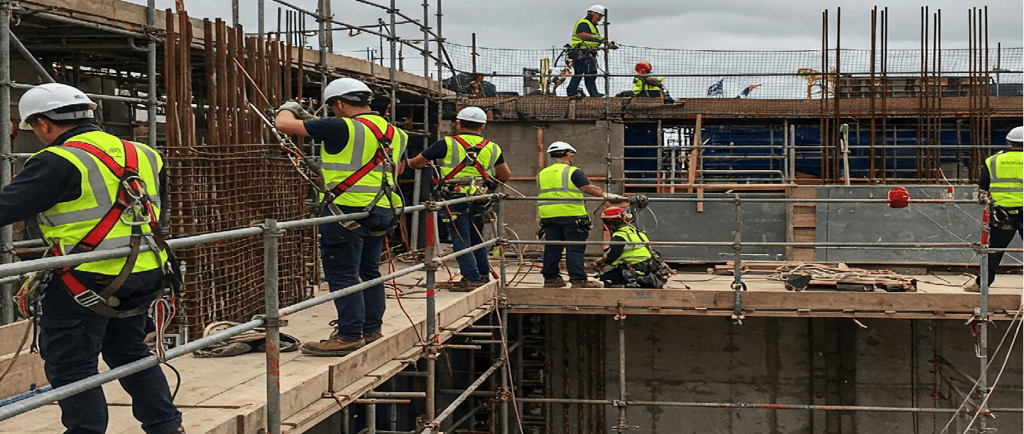Height Safety: Protecting Lives at Elevated Workplaces
Work at Height Safety is essential especially at construction site, as there were serious injuries including fatal if safety is not observed properly
Ganpat Shinde
3/23/20252 min read


Working at heights is one of the leading causes of workplace injuries and fatalities. Proper height safety measures are essential to protect workers and ensure compliance with occupational health and safety regulations. In this blog, we will explore the importance of height safety, key safety practices and essential equipment to mitigate risks.
The Importance of Height Safety
Falls from heights can result in serious injuries or even death. According to workplace safety statistics, a significant number of accidents occur due to inadequate fall protection, lack of proper training and failure to use appropriate safety equipment. Implementing robust height safety measures not only safeguards employees but also enhances workplace productivity and statutory compliance.
Key Height Safety Practices
Risk Assessment – Before beginning any work at height, a thorough risk assessment (HIRA) should be conducted to identify potential hazards and implement control measures.
Proper Safety Training – Workers should receive comprehensive safety training on height safety, including hazard recognition, use of protective equipment and emergency procedures.
Use of Personal Protective Equipment (PPE) – Helmets, harnesses, lanyards, and fall arrest systems should be worn at all times to minimize the impact of falls.
Secure Work Platforms and Ladders – Scaffolding, elevated platforms and ladders should be properly installed, stable and meet safety standards.
Regular Equipment Inspections – Safety gear and height-access equipment should be inspected regularly for any wear and tear or defects to prevent malfunctions.
Proper Signage and Safety Barriers – Clearly marked warning signs and barriers should be placed around high-risk areas to prevent unauthorized access.
Emergency Preparedness – A well-documented rescue plan should be in place in case of falls or accidents and all workers should be familiar with emergency response procedures.
Essential Height Safety Equipment
Full Body Harnesses – These distribute fall forces across the body and provide support during a fall.
Lanyards and Shock Absorb-er – These connect the harness to an anchor point and reduce the impact of a fall.
Anchorage Points – Securely fixed points to which fall protection equipment is attached.
Guardrails and Safety Nets – Prevent workers from falling and minimize the risk of injuries.
Scaffolding and Elevated Work Platforms – Provide stable access to high areas.
Conclusion
Height safety is a critical aspect of workplace safety that should never be overlooked. Employers and workers must prioritize safety training, equipment maintenance and proper planning to prevent accidents and ensure a safe working environment. By implementing these essential safety measures, we can reduce the risks associated with working at heights and protect lives.
